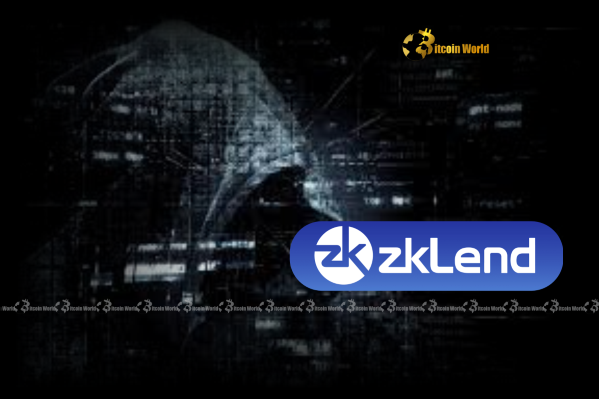BitcoinWorld

Bitcoin-Backed Loans: Unlocking a Revolutionary Era for Institutional Finance
Imagine a world where your digital assets, specifically your Bitcoin, can unlock significant traditional capital without needing to sell them. This isn’t a futuristic dream; it’s rapidly becoming a reality, spearheaded by major players in the crypto space. The latest buzz centers around Twenty One Capital, a firm already making waves with its substantial Bitcoin holdings, now exploring the groundbreaking potential of Bitcoin-backed loans. This strategic move could redefine how institutions leverage their crypto assets, bridging the gap between the burgeoning digital economy and established financial systems.
Who is Twenty One Capital and Why Do They Matter in the Realm of Bitcoin-Backed Loans?
Twenty One Capital isn’t just another name in the crypto sphere; it’s a formidable entity with significant backing and an impressive digital asset portfolio. The firm boasts support from industry giants like Tether, the issuer of the world’s largest stablecoin, USDT, and Cantor Fitzgerald, a venerable Wall Street financial services firm. This powerful alliance lends immense credibility and institutional heft to Twenty One Capital’s endeavors. With a staggering holding of approximately 43,500 BTC, valued at over $5 billion, Twenty One Capital is positioning itself among the largest institutional Bitcoin holders globally. This substantial treasury of Bitcoin isn’t just sitting idle; it represents a significant pool of potential collateral, making the firm a pivotal player in the emerging market for Bitcoin-backed loans.
Their exploration into this innovative financial product signals a growing trend: institutions are not just accumulating Bitcoin; they are actively seeking sophisticated ways to utilize it beyond mere speculation. By considering dollar loans secured by their massive Bitcoin reserves, Twenty One Capital is not only optimizing its own capital structure but also setting a precedent for how other large entities might manage and leverage their digital assets in the future.
What Exactly Are Bitcoin-Backed Loans and How Do They Work?
At its core, a Bitcoin-backed loan is a financial instrument that allows individuals or institutions to borrow fiat currency (like USD) or stablecoins by pledging their Bitcoin as collateral. Think of it like taking out a mortgage on your house, but instead of real estate, your digital gold is securing the loan. The beauty of this mechanism lies in its ability to provide liquidity without forcing the borrower to sell their Bitcoin, thus allowing them to retain ownership and potential future appreciation of their digital asset.
Key Mechanics of a Bitcoin-Backed Loan:
- Collateral Pledging: The borrower transfers a specified amount of Bitcoin to a lender or a smart contract (in a decentralized setup) as collateral. This collateral acts as security for the loan.
- Loan Disbursement: The lender provides the agreed-upon loan amount in fiat currency or stablecoins. The loan-to-value (LTV) ratio typically ranges from 30% to 70%, meaning you can borrow 30-70% of your Bitcoin’s value, depending on the lender and market conditions.
- Interest and Repayment: The borrower pays interest on the loan over a defined period, similar to traditional loans. Once the loan, plus interest, is fully repaid, the Bitcoin collateral is released and returned to the borrower.
- Price Volatility Management: This is crucial due to Bitcoin’s inherent price volatility. Loans often include margin call thresholds. If the value of the pledged Bitcoin drops below a certain LTV, the borrower may be required to add more collateral (a ‘margin call’) or repay a portion of the loan to prevent the collateral from being liquidated.
This financial innovation offers a compelling alternative for those who believe in Bitcoin’s long-term value but require immediate access to capital for various purposes, from business operations to strategic investments, without divesting their crypto holdings.
The Strategic Imperative: Why are Bitcoin-Backed Loans Gaining Traction Now?
The increasing interest in Bitcoin-backed loans isn’t coincidental; it’s a reflection of the evolving crypto landscape and the growing sophistication of institutional players. Several factors contribute to this rising trend:
- Maturing Market: The cryptocurrency market has matured significantly beyond its early speculative days. With established infrastructure, clearer regulatory discussions, and a growing understanding of digital assets, institutions are more comfortable exploring complex financial products.
- Demand for Capital Efficiency: Large institutional holders of Bitcoin, like Twenty One Capital, often have significant capital tied up in their digital assets. They need ways to unlock this capital for operational expenses, new investments, or even share buybacks, without incurring capital gains taxes by selling their holdings.
- Bridging TradFi and DeFi: Bitcoin-backed loans represent a powerful bridge between traditional finance (TradFi) and the decentralized finance (DeFi) ecosystem. They offer a familiar lending structure, but with a new, digital asset class as collateral, appealing to institutions accustomed to conventional credit markets.
- Evolving Regulatory Clarity: While still a work in progress, the global regulatory environment for cryptocurrencies is gradually becoming clearer. This clarity, even if slow, encourages more institutions to participate and innovate within the legal frameworks.
- Search for Yield and Liquidity: In a low-interest-rate environment, traditional investments may offer limited returns. Crypto-backed loans, while carrying their own risks, can provide avenues for both borrowers (access to capital) and lenders (yield on their stablecoins or fiat) to optimize their financial strategies.
This confluence of factors creates a fertile ground for financial products like Bitcoin-backed loans to thrive, moving Bitcoin beyond just a store of value to an active, leveraged asset.
Navigating the Landscape: Benefits and Challenges of Bitcoin-Backed Loans
While the prospect of leveraging Bitcoin without selling it is enticing, it’s crucial to understand both the advantages and the potential pitfalls associated with Bitcoin-backed loans.
Benefits:
- Access to Liquidity Without Selling: This is perhaps the most significant advantage. Holders can access cash for immediate needs without triggering a taxable event from selling their Bitcoin, and without losing their long-term exposure to Bitcoin’s potential price appreciation. This is particularly appealing for those with a strong conviction in Bitcoin’s future value.
- Capital Efficiency: For institutions holding vast amounts of Bitcoin, these loans allow them to put otherwise idle assets to work, generating capital for other investments or operational needs, thus maximizing the utility of their balance sheet.
- Portfolio Diversification: Borrowed funds can be used to invest in traditional assets, real estate, or other ventures, effectively diversifying the borrower’s overall financial portfolio while maintaining their crypto position.
- Tax Advantages: In many jurisdictions, borrowing against an asset is not considered a taxable event, unlike selling it. This can be a major draw for large holders looking to defer or avoid capital gains taxes, optimizing their financial outcomes.
- Flexibility: Loans can often be structured with varying terms, LTVs, and repayment schedules to suit the borrower’s specific needs, offering a customizable financial solution.
Challenges and Risks:
- Market Volatility: Bitcoin’s price can be highly volatile. A significant price drop could lead to a margin call, requiring the borrower to deposit more collateral or face partial/full liquidation of their Bitcoin to cover the loan. This is the primary risk and requires constant monitoring.
- Interest Rates: Interest rates on crypto-backed loans can sometimes be higher than traditional loans, reflecting the perceived risk and novelty of the asset class. It’s important to compare rates across different providers.
- Liquidation Risk: If a borrower fails to meet a margin call, their pledged Bitcoin can be automatically liquidated by the lender, potentially at an unfavorable price, leading to a significant loss of the collateral.
- Counterparty Risk: When dealing with centralized lenders, there’s always a risk associated with the solvency and security practices of the lending platform. Due diligence is crucial before engaging with any service provider.
- Regulatory Uncertainty: The regulatory landscape for crypto loans is still evolving across different countries. Changes in regulations could impact the terms, legality, or tax treatment of these loans, introducing an element of unpredictability.
Understanding these aspects is vital for any institution or individual considering leveraging their Bitcoin holdings, ensuring a balanced approach to risk and reward.
A Glimpse into the Future: What Could This Mean for the Broader Market?
Twenty One Capital’s move into Bitcoin-backed loans is not an isolated incident; it’s a harbinger of a more financially integrated future for digital assets. This trend suggests several profound implications for the broader market:
- Increased Institutional Adoption: As more sophisticated financial products become available, more traditional institutions will find compelling reasons to enter the crypto space, not just as investors, but as active participants leveraging their assets for various financial strategies.
- Deepening Liquidity: The ability to use Bitcoin as collateral will enhance its utility and deepen liquidity across the entire crypto ecosystem, making it a more robust and versatile asset in the global financial landscape.
- Innovation in Financial Products: We can expect to see an explosion of new financial instruments built around digital assets, ranging from more complex lending protocols to derivatives and structured products, further expanding the crypto financial ecosystem.
- Blurring Lines Between TradFi and Crypto: The development of products like Bitcoin-backed loans will continue to bridge the gap between traditional finance and the crypto economy, leading to a more interconnected global financial system where digital assets play a crucial role.
- Bitcoin’s Evolving Role: Beyond being a store of value or a medium of exchange, Bitcoin is increasingly proving its mettle as a high-quality collateral asset, capable of securing significant lines of credit and becoming a foundational element in new financial structures.
Conclusion: The Dawn of a New Financial Paradigm
Twenty One Capital’s exploration of Bitcoin-backed loans is more than just a new product offering; it’s a testament to the evolving sophistication of the digital asset space. By enabling large holders to leverage their Bitcoin without relinquishing ownership, these loans pave the way for unprecedented capital efficiency and liquidity in the institutional crypto market. As firms like Twenty One Capital, backed by industry stalwarts, continue to innovate, the lines between traditional finance and the crypto economy will undoubtedly blur further, ushering in a new era of financial possibilities where digital assets play a central role in global capital markets. This strategic pivot highlights Bitcoin’s growing utility and its potential to underpin a new generation of financial services, truly unlocking its revolutionary potential.
Frequently Asked Questions (FAQs)
Q1: What is Twenty One Capital’s significance in the crypto market?
Twenty One Capital is a major institutional player backed by Tether and Cantor Fitzgerald. Their significance stems from their substantial Bitcoin holdings (over $5 billion) and their innovative approach to leveraging these assets, such as exploring Bitcoin-backed loans, which could set new industry standards for institutional crypto finance.
Q2: How do Bitcoin-backed loans work?
Bitcoin-backed loans allow borrowers to pledge their Bitcoin as collateral to receive a loan in fiat currency or stablecoins. The borrower retains ownership of their Bitcoin, which is returned upon full repayment of the loan and interest. The loan amount is typically a percentage of the Bitcoin’s value (LTV), and borrowers must manage margin calls if Bitcoin’s price drops.
Q3: What are the main risks associated with Bitcoin-backed loans?
The primary risk is market volatility. If Bitcoin’s price drops significantly, borrowers may face margin calls, requiring additional collateral, or risk liquidation of their Bitcoin if they cannot meet the call. Other risks include potentially higher interest rates and counterparty risk with centralized lenders.
Q4: Who is backing Twenty One Capital’s initiatives?
Twenty One Capital is notably backed by Tether, the issuer of the leading stablecoin USDT, and Cantor Fitzgerald, a well-established global financial services firm. This strong backing provides the firm with significant financial and institutional credibility.
Q5: Can anyone get a Bitcoin-backed loan?
While the concept of Bitcoin-backed loans is accessible to individuals and institutions, the specific terms, minimum collateral requirements, and eligibility criteria vary widely among different lenders. Large institutional players like Twenty One Capital operate on a scale that might involve more tailored and complex arrangements.
Did you find this deep dive into Bitcoin-backed loans insightful? Share this article with your network on social media and spark a conversation about the future of institutional crypto finance!
To learn more about the latest crypto market trends, explore our article on key developments shaping Bitcoin institutional adoption.
This post Bitcoin-Backed Loans: Unlocking a Revolutionary Era for Institutional Finance first appeared on BitcoinWorld and is written by Editorial Team





